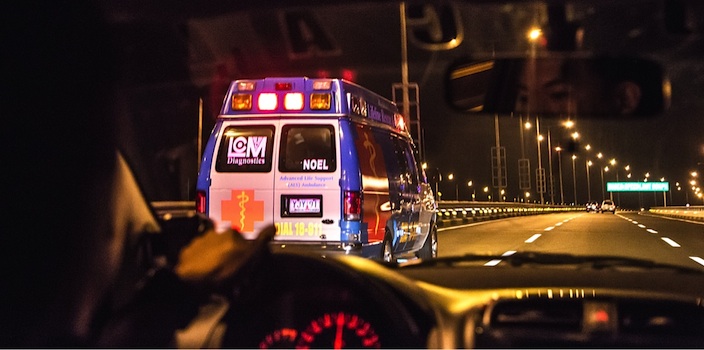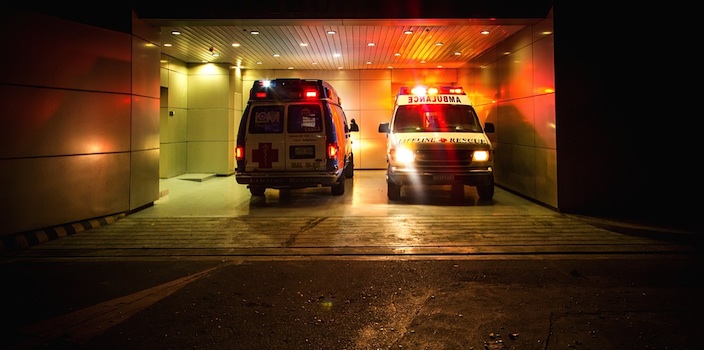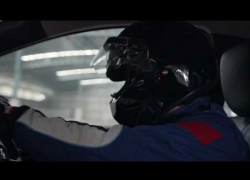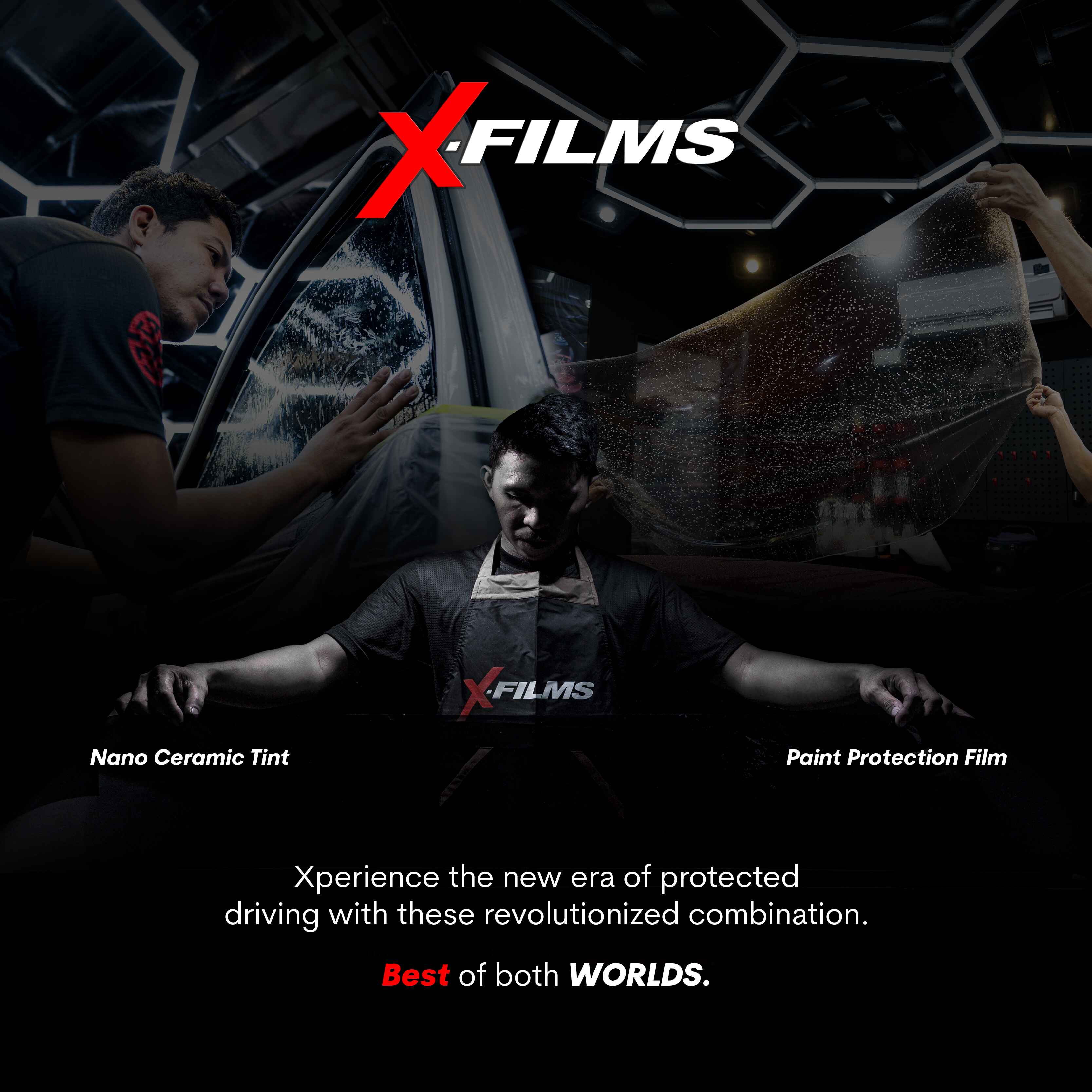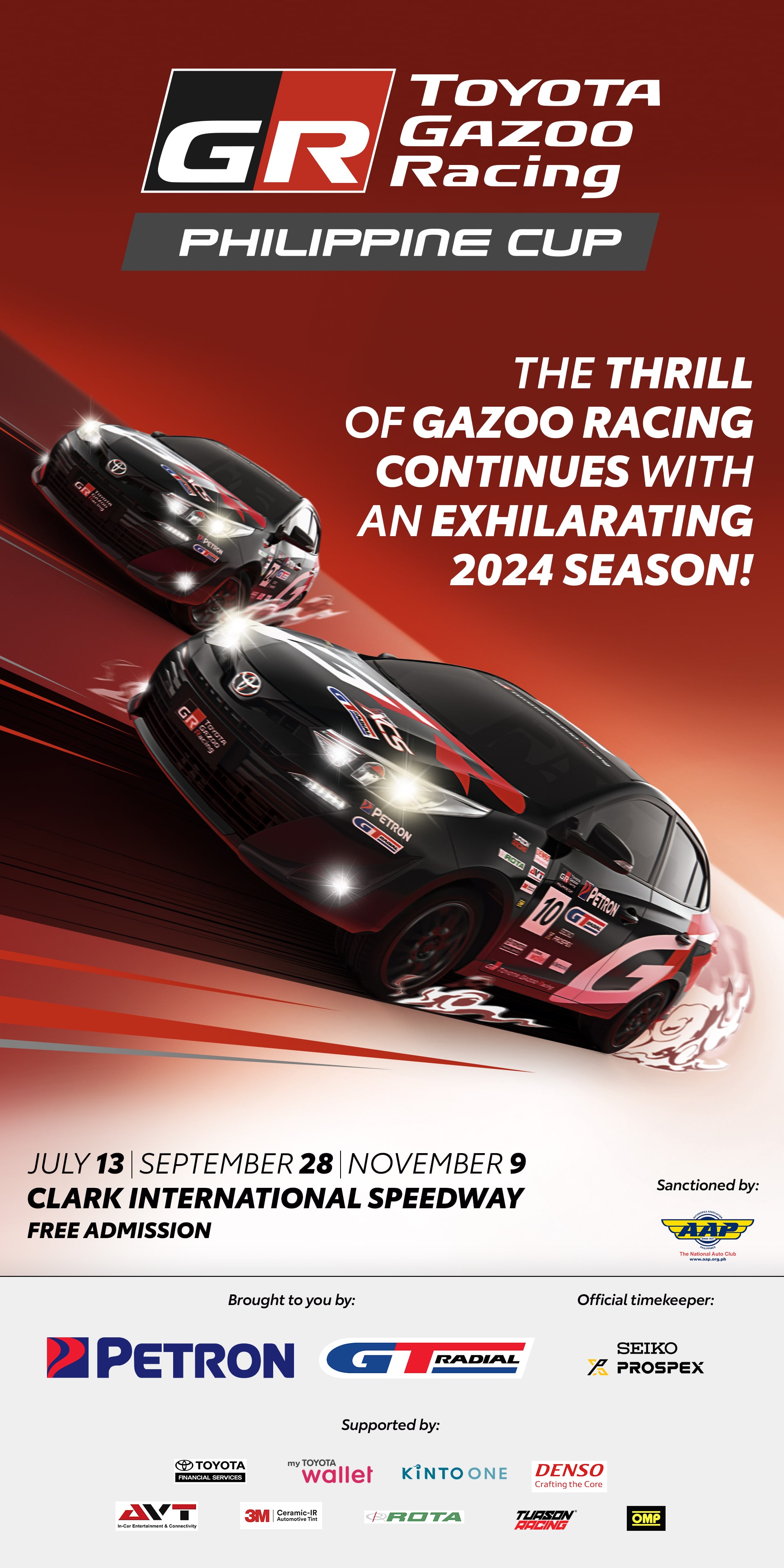We sit there motionless, sirens still blaring. Ten seconds must have gone by, but it feels like an hour. Even the radio is quiet. Just then, before I quite literally almost climbed out of the ambulance and handed the wheel back over to the real driver, a motorcycle skyway patrol cop passes by, doesn’t even slow down, and motions us to follow him.
I’m back on it. It is only now do I realize that the ambulance has been running perfectly ever since the beginning of the code. It is almost as if it needs to be driven on the limit to be at its best, much like a race car that rattles, bucks and overheats when it is going slow.
I’m giving it all she’s got, barely keeping up with the big bike ahead, feeling somewhat assured, but still wondering how on earth are we going to get to the accident site by heading back down the highway.
Just then, I see Skyway cops spread out evenly on the highway, tapering the lane, waving flags like the guys in the airport that guide planes, leading me to an opening they had created in the dividing barriers for us to u turn so as to pull in ahead of all the traffic they were blocking precisely for this.
It was brilliant. A classic case of seeing the big picture and working with good old fashioned team work and exceptional communication. From this perspective, I could see that there was no way I could have been faster crawling through the traffic below. By diverting me to the skyway, even with the added travel distance, they were able to get me to approach the scene from the opposite direction and break the barriers for my U turn right at the site.
I drive past an Isuzu Elf type had been sandwiched by two vehicles. The driver has a broken leg. He is wincing in pain, and although there’s hardly any blood, I’m told that there’s always a chance of massive internal bleeding when bones as large as legs are broken, hence the urgency to get there.
I park up, the team jump out. I follow, but I’m about as useful in this situation as an ashtray on a motorcycle so I leave the team room to work and go back to guard the ambulance. Apparently, as sick as it sounds, they do lose things to bystanders every now and then.
There are other minor injuries, but the co-driver refuses to leave the truck alone, so we leave him with the Skyway patrol and the other Lifeline crew, while we pack up the preppy (code name for patient) and take him to a nearby hospital in Taguig. As painful as it is, he is lucky that it is only a broken leg, and even luckier that it happened on the SLEX, which contract Lifeline to provide free medical emergency care and transport along the entire highway, otherwise he would be 10,000 pesos out of pocket––unless of course he had purchased a membership at 1,500 a year, which would not only cover him but his entire household.
Another code comes across the radio while the crew are endorsing the preppy to the hospital. The Alpha Vali responds instead. I’m still shaking from all the adrenaline. As long as the response felt, we reported touchdown in 16 mins (which is not far off the average of 15 minutes) especially considering the 3-4 minutes spent at the toll gate. In fact, it was so quick that it took another twenty minutes or so for my camera crew to catch up.
By the time they did show up, I had developed this crippling stomach ache that I actually needed to be medicated for. I’m told it is quite normal for newbies to get so stressed that they can literally tie their stomachs into a knot, which is exactly what happened to me. And only once the adrenaline died down did I begin to realize the pain. It is hard to believe that I’ve only been on the job for less than an hour.
While the crew had nothing but good things to say about my actual driving, the team leader did say I need to work on my emotions getting the better of me and cut out the yelling and the swearing; while it may be funny in hindsight, and no harm was done in this case, it can add unnecessary tension to those on board––especially a patient and their relatives. Plus it increases the chances of an accident.
But while I may still have a bit to learn, I also need to take this time out to say that so do a great deal of others out there. Firstly, the security guards. Believe it or not, many guards still hold up ambulances at village gates or from entering office buildings. The crew tell me of the time they were forbidden from entering Corinthian gardens and held at the gate for one hour because nobody was answering the phone of the resident that called. Duh.
Just on one of my four runs alone I already experienced the arrogance and ignorance of an airport security guard that wouldn’t allow us to park (despite them being the ones who called for us and asking for all our names in advance) and forced us to circle through the highly congested streets around NAIA 1. I did it the first time, but once I saw them do nothing about the airport cabs standing by in the exact same area under the no parking sign, I just stood my ground and told him quite politely that the only way I would move my ambulance is if he was laying in the back of it.
Then there are the drivers. My Lord God please help me with this paragraph. I know that we hear of abuse from a lot of emergency vehicles––especially the government ambulances that abuse their sirens––but you really do need to give way. Don’t play God. It is not your job. Seriously. I can’t describe to you the feeling of knowing that an 8 week pregnant mother is laying down with vaginal bleeding praying from the depths of her soul that we show up and save her baby, and telling her that the only thing in the way was you.
Yes it is inconvenient for us to pull to the side and stop so that we can create a zipper effect that an ambulance can weave through (No point two cars stopping side by side) but even if it is that one out of ten times that it’s legit, it makes the other nine worth it. If it is not legit, it is not your sin. Let the driver answer to his employer if he’s the boy that cries wolf, or better yet, to God.
